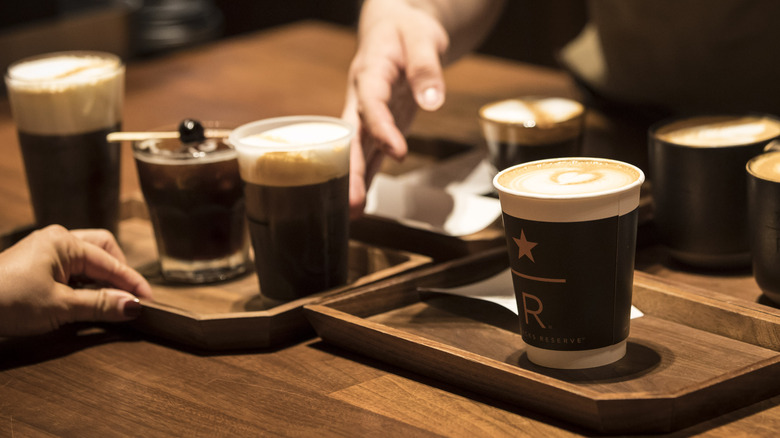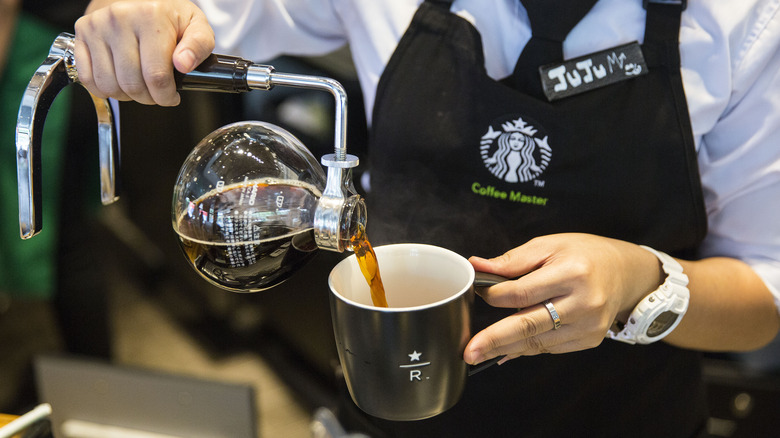Will Starbucks Evenings Ever Return To Stores?
Starbucks may have a monopoly on your morning latte, but for a while, it also offered adult beverages to those winding down for the night. In 2010, the chain launched Starbucks Evenings for Seattle customers, with a special menu that featured beer, wine, and appetizers ranging from truffle popcorn to bacon-wrapped dates and flatbreads.
By 2015, the concept of serving alcohol and sharable menu items to boost afternoon sales grew. Starbucks planned to spread the initiative to over 2,000 locations in the U.S., including in states like California, Oregon, Illinois, and Florida. However, by January 2017, Starbucks announced the end of the Evenings program.
Unfortunately, it doesn't seem like the Starbucks Evenings tasting menu will be returning to your local Starbucks anytime soon. While the company hasn't made any official statements updating customers since the initial cancelation, the chain's efforts have largely shifted toward its Reserve Roastery locations. When the Seattle Roastery opened in December 2014, former Starbucks CEO Howard Schultz referred to it as "the fulfillment of a decades-long dream," which may have pointed to a bigger goal all along.
Starbucks Evenings were unsustainable
There are Starbucks Reserve Roastery locations in just six cities worldwide, each serving uniquely roasted coffee, seasonal cocktails, beer, wine, coffee flights, and various food options. While the limited Reserve Roastery locations may be inconvenient for patrons outside of those six cities, they're an elevated version of the original Starbucks Evenings concept, more likely to be manageable for Starbucks as a business.
A 2015 Reddit post about the Starbucks Evenings stores had workers discussing the complicated logistics of getting hired and trained for these shifts, especially with different states' laws regarding the minimum age required to serve alcohol and the extra training required for the alcohol tastings. One user further claimed that employees were treated more as the "wait staff," delivering food and clearing tables once customers finished. Another noted that the tips were "not anything fantastic" and added that most of the patrons were the store regulars, anyway, rather than a new crowd.
The dynamic made Starbucks seem like a restaurant instead of a coffee shop, which inevitably complicated the brand's identity. Plus, the cost of extra training and confusion around marketing this endeavor led to an unsustainable business model and one of the biggest flops in Starbucks history.

